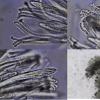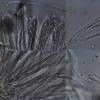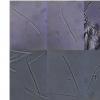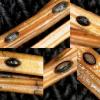
18-12-2025 21:17
Pol DebaenstThe identification took me to Byssonectria deformi

15-12-2025 07:09
 Danny Newman
Danny Newman
indet. Rutstroemiaceae sp. on unk. fallen leavesMc

19-12-2025 10:10
Patrice TANCHAUDBonjour, récolte réalisée en milieu dunaire, a

18-12-2025 17:23
 Bruno Coué
Bruno Coué
Bonjour,je serais heureux d'avoir votre avis sur c

18-12-2025 18:07
Margot en Geert VullingsThese plumes were found on rotten wood.They strong

17-12-2025 18:35
 Michel Hairaud
Michel Hairaud
Bonjour à tous/Hi to everyone I am passing along

15-12-2025 15:48
 Danny Newman
Danny Newman
Melanospora cf. lagenaria on old, rotting, fallen

15-12-2025 15:54
 Johan Boonefaes
Johan Boonefaes
Unknown anamorph found on the ground in coastal sa

15-12-2025 21:11
 Hardware Tony
Hardware Tony
Small clavate hairs, negative croziers and IKI bb
Lophodermium on Pinus pumila
Mathias Hass,
08-04-2025 11:22

Hi,
I have some trouble with this Lophodermium. I suppose there are 3 possible species...but which one? I hope some can help.
Found in March in large numbers on attached needles of Pinus pumila (a 5-needle species) from a botanical garden, Denmark. P. pumila is not a naturally occurring tree in Denmark. Apotecia in conspicuously regular intervals along the needles, very few transverse black lines, on one occasion a brown line.
Apotecia: about 0,63 mm (0,46 mm - 0,81 mm) long (n=10), ellipsoid. No clear black line surrounding the apotecia. Lips look to me greyish. On one occasion seen in bright sunlight the lips appeared bluish. I do not feel sure about the colour, but red they are not.
Asci: when mature > 100 my long, up to about 130 x 15 my, typically 116x12 my, 8 spores arranged in parallel.
Ascospores: Direct after collection (few spores): 83,5 (73,9-93,0) my x 1,9 (1,8-2,1) my, Q=43, n=10. Surrounded by a 2,4 my thick gelatinous sheet. No appendages seen. After incubation wet and at RT for a week: 73,7 (63,3-87,6) x 2,3 (2,0-2,8) my, Q=32 , n=10. The spores seem to become significantly shorter but wider (and paraphyses get swollen tips).
Paraphyses: cylindrical, 2,5 my wide, somewhat bent tips but not swollen. The tips have a large number of diffracting small droplets which makes them appear brownish, at least in relatively immature apotecia. After incubation pararaphyses have swollen tips, up to 4 my broad.
Asci: when mature > 100 my long, up to about 130 x 15 my, typically 116x12 my, 8 spores arranged in parallel.
Ascospores: Direct after collection (few spores): 83,5 (73,9-93,0) my x 1,9 (1,8-2,1) my, Q=43, n=10. Surrounded by a 2,4 my thick gelatinous sheet. No appendages seen. After incubation wet and at RT for a week: 73,7 (63,3-87,6) x 2,3 (2,0-2,8) my, Q=32 , n=10. The spores seem to become significantly shorter but wider (and paraphyses get swollen tips).
Paraphyses: cylindrical, 2,5 my wide, somewhat bent tips but not swollen. The tips have a large number of diffracting small droplets which makes them appear brownish, at least in relatively immature apotecia. After incubation pararaphyses have swollen tips, up to 4 my broad.
Kind Regards
Mathias




